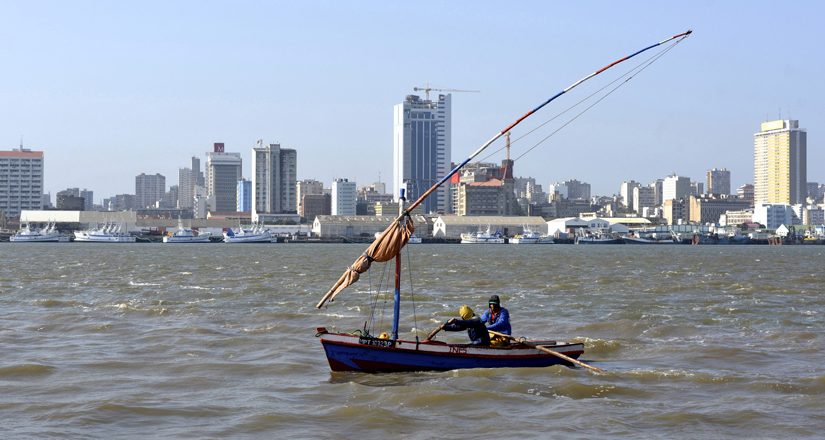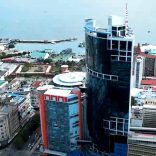Mozambique: Pension fund deposits in banks fell 75% in one year
Mozambique: Government sets 20 March meeting with creditors – but ‘so para ingles ver’ – By Joseph Hanlon

Lusa (File photo)
Government will make a presentation on 20 March in London to commercial creditors – the holders of the $2 bn bonds and syndicated loans of the secret debt. But the meeting is mainly for show – there will be no serious negotiations until at least 2020 after national elections, and perhaps not until 2023 when gas production starts.
A statement by the Ministry of Economy and Finance (MEF) on 22 February said that the presentation will provide an “update on recent fiscal and macroeconomic developments in Mozambique. The Government of Mozambique will also present to creditors the key elements of debt restructuring proposals.” But the update will surely say that Mozambique remains in debt distress and there is no chance of payments until there are gas revenues, probably 2025 or later. Thus any restructuring would involve a major cut in the value of the debt (known as a “haircut”) and no payments for nearly a decade.
The presentation has been forced by the IMF, which considers “discussions with creditors” to be “essential”, and therefore had to be announced before the IMF board meets on Friday 2 March to consider the results of the December Article IV mission to Mozambique. Bondholders, as well as Russian bank VTB which has some of the syndicated loans, have also been pushing for a meeting. But it is just for show – as the phrase in Portuguese has it: “so para ingles ver”, just for the English to see. (The phrase dates from the time when Portugal continued the slave trade but officially agreed to the British ban.)
There are four reasons no one wants to negotiate now.
1. No one has clean hands, so any negotiation should be pushed so far into the future that no one remembers the original misconduct. The loans are clearly “illegitimate” but neither the Mozambicans who took the loans nor the banks that organised them, Credit Suisse and VTB, nor the company which received the money, want details of their roles exposed – and want to wait a few years until it is forgotten history.
2. A better deal is probably possible when none of the guilty people are around and when there is a serious prospect of substantial gas revenues.
3. Most lenders understand that they will be forced to accept a large “haircut” – probably receiving only one third to one half of the value of the loan, in part due to illegitimacy. But it appears that some feel that, for the present, they can keep the loans on their books at a much higher value – taking the haircut later rather than now. Bloomberg (23 Feb, http://bloom.bg/2ovc5zm) notes that after the 22 February MEF announcement, bonds were bought at 86% of their face value, much higher than most investors think will be the final settlement. But that sale price allows all bondholders to value their holding at 86%.
4. Mozambique made clear to the IMF mission in December that there will be no changes in economic policy in the near future and the government will keep borrowing, at least domestically, which will make the debt distress much worse. This will continue until the October 2019 elections, and will restrict economic growth and domestic private sector investment – but the government hopes that, like a juggler, it can keep the balls in the air until that election. And it has made clear that it will not meet the central IMF and donor demand – to provide the missing information from the Kroll audit report, about where the money went. So it will be left for the next government (headed by Nyusi or Dhlakama) to negotiate a new programme with the IMF and bilateral donors in 2020, and no serious debt talks will occur before then.
Door left open for illegitimacy claim
The most detailed summary of Mozambique’s debt situation is the Tribunal Administrativo (TA, audit court) report of November 2017 on the state accounts of 2016. (http://www.ta.gov.mz/Pages/RelatoriosPareceresCGE.aspx, Capitulo XI)
The TA has been careful to ensure that in negotiations with creditors, Mozambique can argue that the debt was “illegitimate” or “odious” – that it should not be repaid and is the liability of the two banks which committed misconduct when they organised the loans, Credit Suisse and VTB. The loans contracts say that any enforcement of payment would be made in English courts. A ruling in the English High Court on 29 March 2017 by Sir William Blair, brother of former prime minister Tony Blair, about Ukraine debt effectively set the guidelines about when a debt could be seen as illegitimate. It appears that Mozambique’s debt fits these criteria (see this newsletter 372, http://bit.ly/2oxHPnt) and the TA has been careful to ensure that these guidelines are followed. Two are important: that the government never accept the legality of the debts and that they do not go into the state accounts.
The $2 bn loans were made to three security service controlled companies – Ematum, MAM and Proindicus – but the money went directly to a Abu Dhabi company, Privinvest. The structure of the loans is different, which causes confusion.
The $761 mn Proindicus and $644 mn MAM loans are what are called syndicated loans – the two banks, VTB and Credit Suisse, organised groups of lenders (“syndicates”). The loans were arranged in secret and Mozambique does not know who are the lenders; it only deals with the two organising banks. The TA notes that “in 2013 and 2014, the state issued guarantees in favour of the companies Proindicus and Mozambique Asset Management (MAM), in amounts that exceeded the limits established in the budget laws of those years” – thus the TA is maintaining the position that the debts are illegal. And the loans are carefully never included in any of the debt tables. MEF is clearly doing the same thing in its debt statements, which led the Public Integrity Centre (CIP) to accuse the government in a 22 February statement of “concealing the commercial debt”. (http://bit.ly/2oxhndI) But it appears that both the TA and MEF are being careful to ensure that they can always claim that the debt is illegitimate under the Ukraine ruling.
The $850 mn Ematum loan was different. It had the form of bonds, also organised by Credit Suisse and VTB, but was public and the bondholders are known. The TA notes that Ematum could not pay those bonds, so the state nationalised the debt in 2016 and issued new government bonds. Parliament approved the new bonds before it knew about the MAM and Proindicus loans, which only became public later that year.
Whereas the TA does not include the MAM and Proindicus loans in any table, the $726 mn Ematum debt to Credit Suisse is listed as a bilateral debt. This has led the Ematum bondholders to argue that the MAM and Proindicus loans are illegitimate and should not be repaid, and that the original Ematum bonds were also illegitimate, but that the new government bonds are legitimate because they were approved by parliament and must be repaid. Others, however, have argued that the illegitimacy carries forward to the new bonds. Clearly this will be a key point in any negotiations, but none of the lenders will want to test this in court.
Finally, MEF and the TA have treated payments already made in a very unusual way, apparently to also keep them off the books. In 2015-16, on the Ematum bonds $262 mn was paid to Credit Suisse, and on the Proindicus loans, $59 mn was paid to Credit Suisse, $8 mn to Palomar, and $1 mn to VTB. But the TA says these payments could only be made because the Bank of Mozambique was willing to lend the money to the government. Therefore those payments go into the accounts as domestic loans by the Bank of Mozambique to the government.
All very obscure. For those promoting transparency, this looks like concealment. But the loans are being hidden in the open, but not being put into the state accounts – perhaps to allow an argument of illegitimacy in future negotiations. jh
Other debt problems
By the end of 2017, Mozambique had failed to make debt service payments of more than $700 mn. The largest arrears are to Brazil, notably involving the Nacala airport, which was only built because of a bribe. In additional a total of $94 mn is owned to Libya, Iraq, Angola, Bulgaria and Poland, some of which is historic debt going back decades.
At the end of 2016, Mozambique largest debts were $2559 mn to the World Bank, $1699 mn to China, $726 mn to Credit Suisse, and $633 mn to Portugal.
In addition, in 2016 the government was forced to assume some of the debts of LAM and the Maputo Sul development (the bridge over the harbour).
By Joseph Hanlon












Leave a Reply
Be the First to Comment!
You must be logged in to post a comment.
You must be logged in to post a comment.